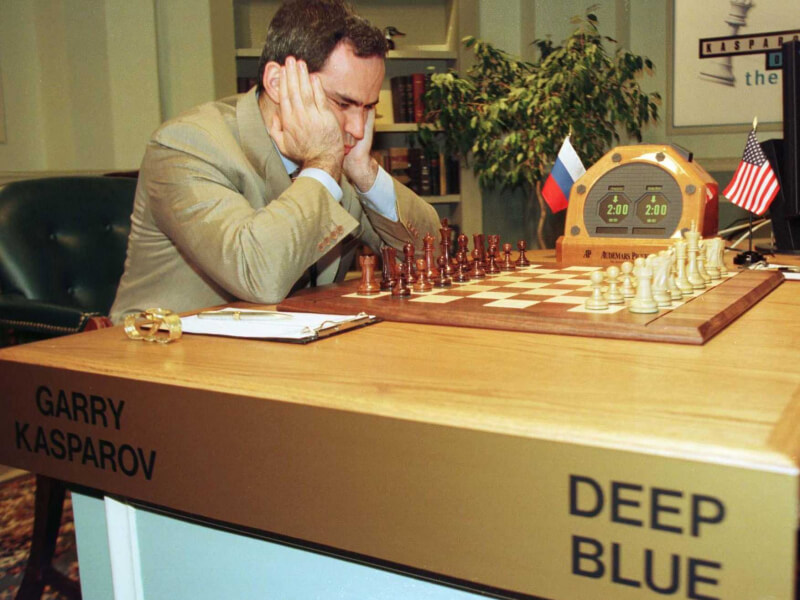A little background and more context about this trivia

IBM's Deep Blue system achieved its first victory over a world chess champion on February 10, 1996, when it won the first game of a six-game match against Garry Kasparov. Despite this initial loss, Kasparov triumphed in three of the following games and drew the remaining two.
In May 1997, more than a year later, Kasparov narrowly lost a six-game rematch against an upgraded version of Deep Blue. The defeat was so surprising that Kasparov went as far as accusing IBM of cheating. IBM refuted these claims and declined a subsequent rematch offer, choosing instead to retire the Deep Blue system.
The development of Deep Blue began in 1985 with the ChipTest project at Carnegie Mellon University. The system was predominantly based on brute force computing power to play chess. It comprised a massively parallel, RS/6000 SP Thin P2SC-based system with 30 nodes. Each node contained a 120MHz P2SC microprocessor that was enhanced with 480 special-purpose VLSI chess chips.
The chess-playing program of Deep Blue was developed in the C programming language, operating under the AIX operating system.
During its 1997 rematch with Kasparov, Deep Blue was capable of evaluating 200 million positions per second. This rate was twice as fast as its 1996 version, thus marking a significant leap in its computing capability. At that time, it held the rank of the world's 259th most powerful supercomputer.
The Deep Blue-Kasparov matches were landmark events in the history of artificial intelligence. They showed the world that machines could outperform even the best human minds in complex tasks, sparking widespread debate about the implications of rapidly advancing technology. Deep Blue paved the way for the development of more sophisticated AI systems that continue to push the boundaries of what machines can achieve.